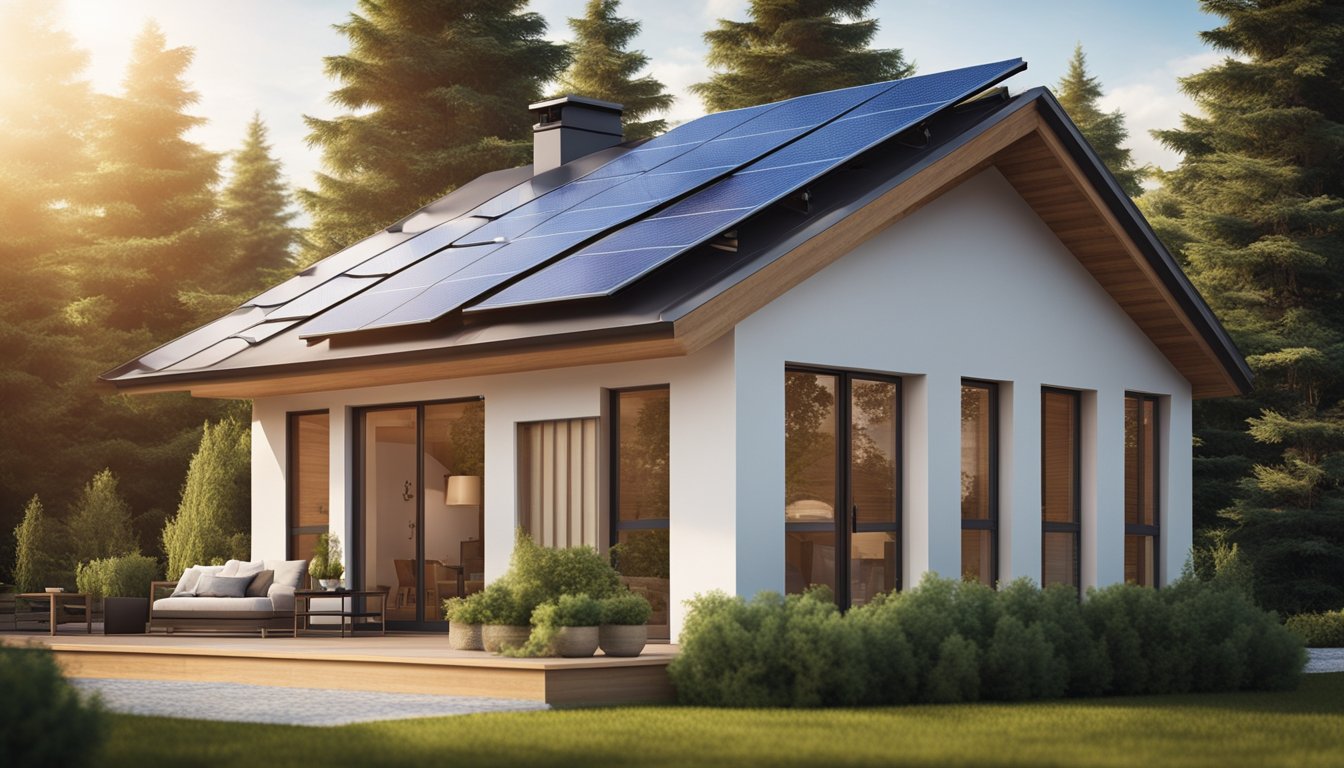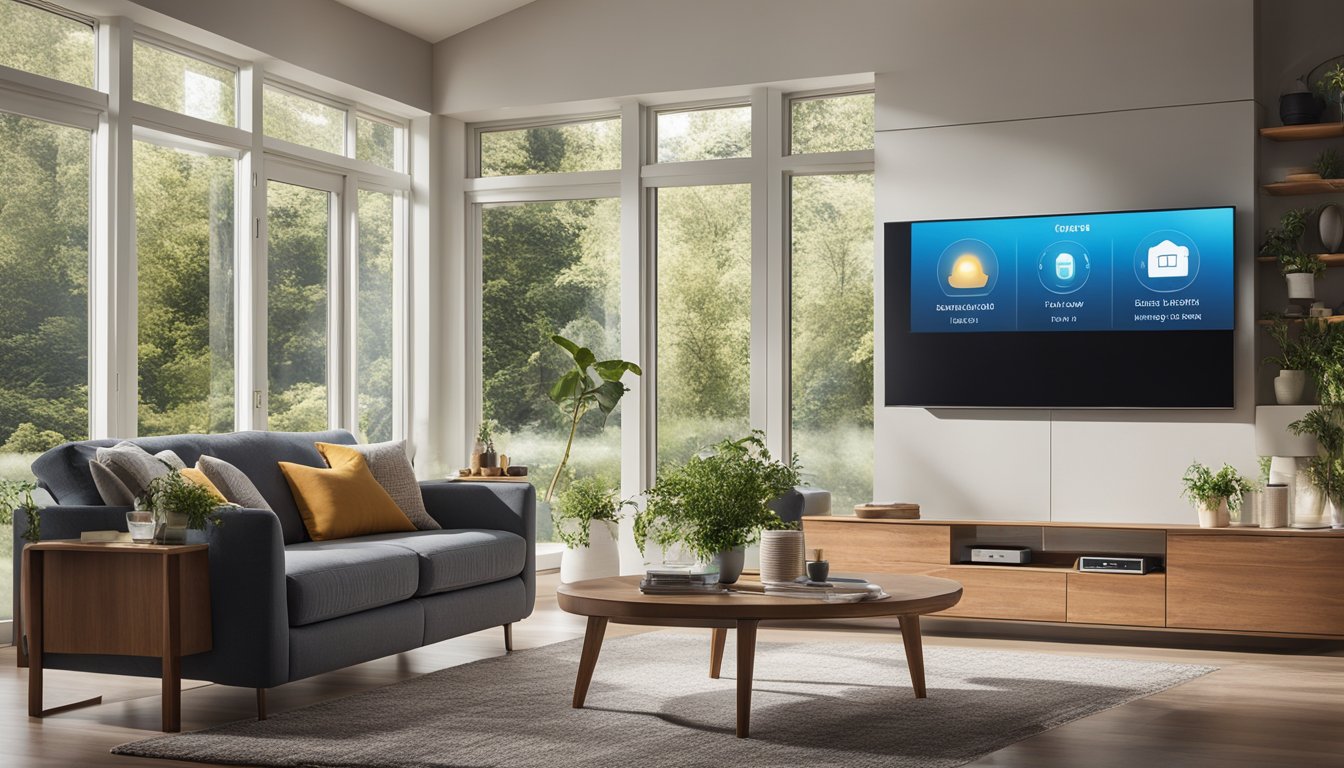Late updated: 21 Nov 2024 15:11
Written by: Eleanor Hartman
Energy Saving Tips For UK Homeowners: Simple Ways to Cut Costs
As homeowners in the UK, it's essential for us to find effective ways to cut down on energy consumption, not only to reduce our carbon footprint but also to lower those ever-rising energy bills. Many of us might not realise the impact that simple changes can have. Utilising basic energy-saving tips can result in significant savings on our household expenses. By exploring these strategies, we can make our homes more energy-efficient, saving both money and the environment.

Increased awareness of energy consumption habits can lead to substantial changes. We can focus on optimising home insulation and considering smarter energy management systems to help maximise efficiency. From reducing shower time to selecting energy-efficient light bulbs or appliances, every small adjustment contributes to a larger outcome. It's time to embrace these energy-saving practices and transform our living spaces.
Let's delve into these practical tips and explore how they can benefit us as UK homeowners. These steps are not just about cost savings — they also support a sustainable future by conserving energy. The right changes can make a massive difference, and together, we can achieve a more sustainable lifestyle.
Key Takeaways
- Simple energy-saving adjustments can significantly reduce bills.
- Home efficiency improvements benefit cost and environment.
- Awareness and action can transform energy consumption habits.
Optimising Home Insulation

Effective insulation is key to reducing energy consumption in UK homes. By implementing diverse strategies such as cavity wall insulation, loft insulation, draught-proofing, and advanced glazing solutions, we can substantially cut utility costs and enhance comfort.
The Importance of Proper Insulation
Insulation plays a vital role in maintaining consistent indoor temperatures throughout the year. In the UK's temperate climate, this translates into keeping warmth in during the colder months and out during the hotter months. Proper insulation can help save money on heating and cooling bills, and it's a crucial component in making our homes more energy-efficient. Additionally, investing in insulation reduces the environmental impact by lowering overall energy consumption.
Cavity Wall and Loft Insulation Options
The choice of insulation type is essential. Cavity wall insulation involves filling the gap between the external walls, significantly enhancing thermal efficiency. It’s especially effective for homes built post-1920s. Loft insulation ensures that heated air doesn’t escape through the roof. By insulating a loft, homeowners can prevent up to 25% of heat loss. The benefits include better heat retention and significant cost savings in energy bills, making our homes more comfortable during the winter months.
Draught-Proofing Your Home
Draught-proofing is one of the simplest and most cost-effective ways to improve energy efficiency. Sealing gaps around doors, windows, chimneys, and floors can prevent cold air from entering and warm air from escaping. This method of draught proofing enhances comfort by eliminating cold spots and reduces reliance on heating systems. It is a straightforward DIY project suitable for most homeowners, providing immediate benefits in terms of both energy savings and comfort improvement.
Glazing Solutions: Double and Triple
Upgrading windows is a significant step in improving insulation. Double glazing involves two panes of glass with a gap in between, which acts as an insulating barrier. Triple glazing adds an extra pane, offering even better insulation and noise reduction. The choice between the two depends on the specific needs of the home; well-insulated windows can drastically reduce heat loss. Modern glazing solutions also contribute to reducing energy bills and increasing the overall comfort of the home.
Smart Energy Management

Effective home energy management can lead to significant cost savings and a reduced environmental footprint. By integrating smart technology with everyday habits, we can maximise efficiency and minimise waste. Below, we explore key areas where smart technology can enhance our energy management efforts.
Heating Controls and Smart Thermostats
Smart thermostats play a pivotal role in optimising our home's heating system. They allow us to control our central heating remotely and create schedules based on our daily routines. This ensures that heating is only used when necessary, avoiding wastage. By adjusting temperatures automatically, smart thermostats save energy and can reduce heating costs significantly.
Investing in a smart thermostat can lead to substantial savings. According to the Energy Saving Trust, even modest temperature reductions can result in noticeable energy savings. Additionally, these devices often include analytics features, offering insights into energy usage patterns that help adjust settings for better efficiency. Smart heating controls are crucial for anyone looking to optimise their energy consumption.
Utilising Energy-Efficient Appliances
Switching to energy-efficient appliances is another essential step. Appliances with high energy efficiency ratings consume less electricity while delivering the same performance as conventional models. For instance, dishwashers and washing machines with high efficiency ratings can reduce energy consumption substantially. It's worth checking for models with features like standby savers, which cut off power supply to devices not actively in use.
Appliances that incorporate smart technology allow remote control and monitor energy use via smartphone apps. This helps us identify high-energy use periods and adjust usage accordingly. By investing in these solutions, we align with the UK’s Energy Company Obligation to improve energy efficiency and reduce carbon impact.
Lighting Solutions for Lower Energy Consumption
Lighting accounts for a significant portion of a household’s electricity use. Switching to LED bulbs can make a dramatic difference as they use up to 75% less energy compared to traditional incandescent bulbs. The Energy Saving Trust highlights the potential savings that LED bulbs offer, not just in terms of energy consumption but also in longevity.
Utilising smart lighting systems can further enhance savings. These systems enable automatic adjustments based on room occupancy or natural light availability. By incorporating dimmer switches and motion sensors, we can ensure lights are used efficiently, thus minimising unnecessary energy use. These solutions contribute greatly to our goal of saving energy at home.
Frequently Asked Questions

Our guide offers essential tips on lowering energy costs and improving efficiency for UK homeowners. We cover practical approaches to reduce electricity usage, optimize home insulation, and manage appliance energy consumption. We also focus on increasing efficiency in older properties and cutting energy costs without hefty investments.
What are the best strategies to decrease domestic electricity usage in the UK?
Switching to LED lighting saves significant energy. Smart meters can monitor usage and identify opportunities for further savings. Unplug devices when not in use, and adopt energy-saving settings on appliances.
How can one effectively insulate their UK home to conserve energy?
Professional draught-proofing eliminates heat loss via doors, windows, and floors. Installing double glazing and insulating lofts or cavity walls conserves heat. These methods enhance comfort and reduce heating costs.
What household appliances consume the most energy and how can their impact be minimised?
Washing machines, dishwashers, and tumble dryers are heavy energy consumers. Using energy-efficient models and operating them with full loads on ECO settings minimizes their impact. Regular maintenance ensures optimal performance.
What practical steps can UK homeowners take to lower their heating bills?
Lowering the thermostat by one degree can cut heating costs. Upgrading to a smart thermostat enhances this efficiency. Using programmes that match heating schedules to occupancy can prevent unnecessary energy waste.
Could you suggest methods to improve energy efficiency in an older UK property?
Sealing gaps and installing secondary glazing can mitigate draughts. Adding insulation to loft spaces or under floorboards can be beneficial. Upgrading boilers and installing thermostatic radiator valves are effective measures.
What are the top tips for reducing energy costs in the UK without investing in major renovations?
Simple actions like switching off lights, reducing water heating temperatures, and layering clothing can reduce costs. Minimizing tumble dryer use and air drying clothes helps, as does using energy-efficient bulbs.